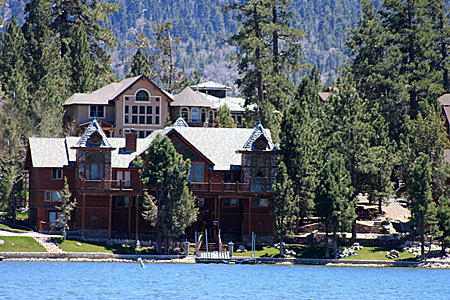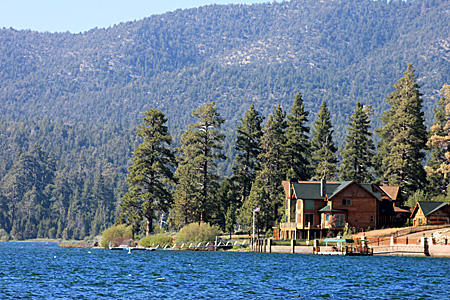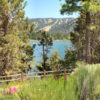Every Big Bear real estate purchase agreement should include a provision for a home inspection. The following list covers the basic elements that a home inspector will check. You can also use this list to help you evaluate properties you’re considering for purchase.
Structure: A home’s structure impacts how the property stands up to weather, gravity, and the earth. Structural components, including the foundation and the framing, should be inspected.
Exterior: Big Bear weather and sunlight can be tough on homes. The inspector should look at sidewalks, driveways, steps, windows, and doors. A home’s siding, paint, trim, and surface drainage also are part of an exterior inspection. An exterior inspection should include:
• Doors and windows
• Siding and paint
• Driveways and sidewalks
• Attached porches, decks, exterior stairways, and balconies
Roofing: A well-maintained roof protects you from rain, snow, and other forces of nature. Be sure to check the roof’s age, conditions of flashing, drainage, buckled shingles, loose gutters and downspouts, skylight, and chimneys. Pine needles or debris that has been allowed to collect on the roof will damage the roof and shorten its life.
Plumbing: Thoroughly examine the water supply and drainage systems, water heating equipment, and fuel storage systems. Drainage pumps and sump pumps also fall under this category. Poor water pressure, banging pipes, rust spots, or corrosion can indicate problems. Big Bear winters can cause pipes to freeze so check to make sure exposed pipes are properly insulated.
Electrical: Safe electrical wiring is essential. Look for the condition of the wires, service panels, breakers and fuses. Also take note of the number of outlets in each room.
Heating: The home’s heating system, vent system, flues, filters, and chimneys should be inspected. Look for age of water heater, whether the size is adequate for the house, speed of recovery, and energy rating.
Air Conditioning: Although AC units are rare in Big Bear, your inspector should describe your home cooling system, its energy source, and inspect the central and through-wall cooling equipment. Consider the age and energy rating of the system.
Interiors: An inspection of the inside of the home can reveal plumbing leaks, insect damage, rot, construction defects, and other issues. An inspector should take a close look at:
• Walls, ceilings, and floors
• Steps, stairways, and railings
• Countertops and cabinets
• Garage doors and openers
Ventilation/insulation: To prevent energy loss, check for adequate insulation and ventilation in the attic and in unfinished areas such as crawlspaces. Also look for proper, secured insulation in walls and around windows and doors. Insulation should be appropriate for our Big Bear climate. Excess moisture in the home can lead to mold and water damage.
Fireplaces: A fireplace that has not been properly installed or maintained can be dangerous. Inspectors should examine the vent, flue, and spark arrestor. Check for creosote buildup and proper venting.
Appliances: All built-in appliances should be inspected and operated to insure that they are working properly, including:
• Oven / Stove / Microwave
• Dishwasher
• Disposal
Ask your agent at Tyler Wood Group for a list of professional Big Bear home inspectors. It’s important to remember that home inspections are used to determine the condition of a property, they are not a “fix-it” list. There’s no guarantee that a seller will repair or replace items found in the inspection report. Other than strapping the water heater & making sure there are operational smoke detectors and CO2 detectors, all repairs are negotiable between the buyer and seller.
More About Home Inspections;
- 8 Essential Home Inspection Tips | Beaches Inspection – A blog for buyers when buying a home and hiring a Home Inspector. Things to note and look for during the home inspection process.
- Home Inspection Tips for Buyers « Gregg S. Marcus – Here is an excerpt from a new blog post at GreggMarcus.com: Getting a home inspection is one of the most vital steps prior to buying a home. For buyers, it may be the grounds for negotiating price offers, planning potential …
- Home Inspection Tips | Tom and Bev – HouseMaster recently showed that more than 40% of previously sold home passed a home inspection even though it had at least one serious problem.









Speak Your Mind